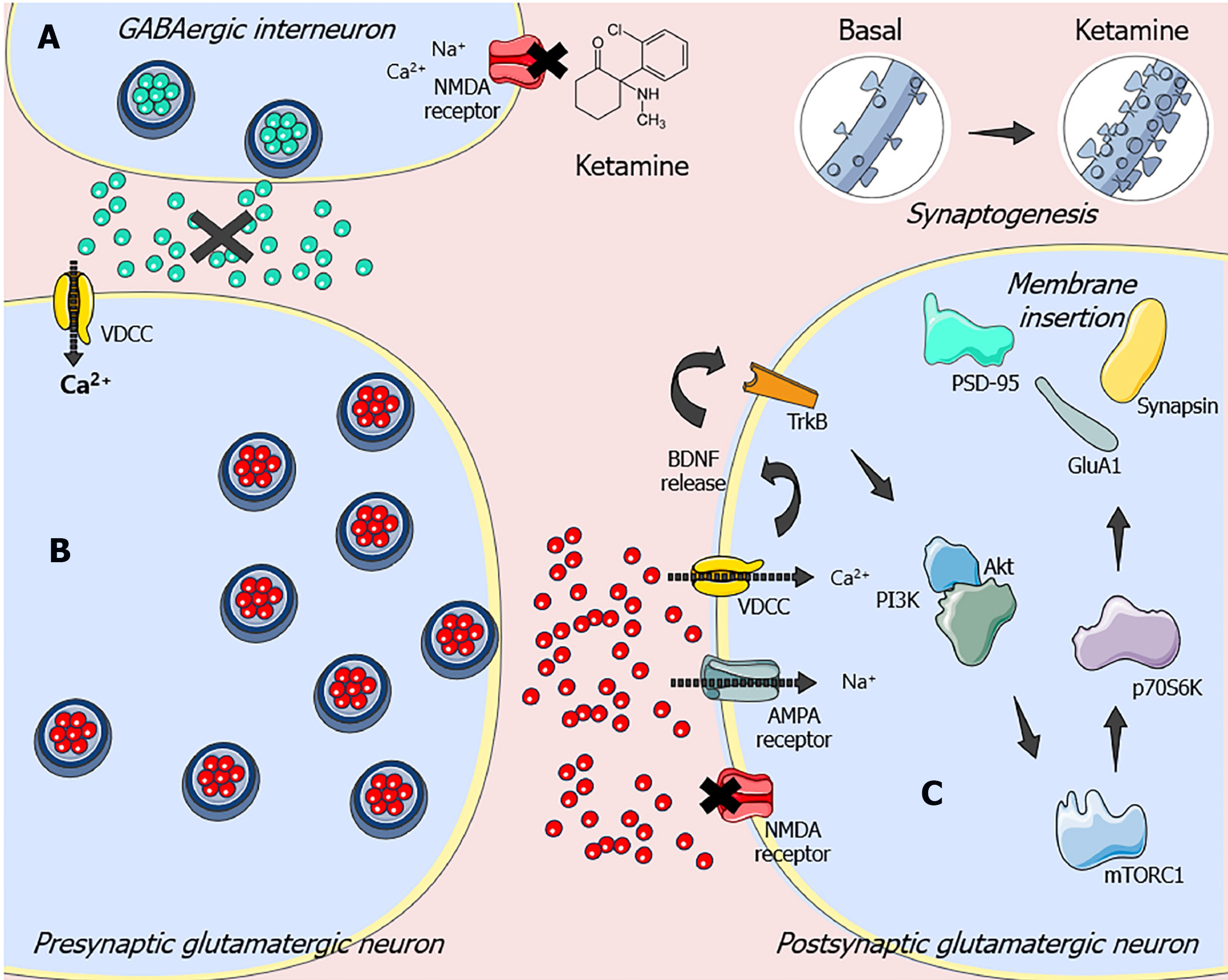Copyright
©The Author(s) 2021.
World J Psychiatr. Nov 19, 2021; 11(11): 981-996
Published online Nov 19, 2021. doi: 10.5498/wjp.v11.i11.981
Published online Nov 19, 2021. doi: 10.5498/wjp.v11.i11.981
Figure 1 Supposed intracellular signaling pathway implicated in ketamine’s antidepressant-like effects.
A: Ketamine antagonizes N-methyl-D-aspartic acid receptors in GABAergic interneurons, which in turn attenuate the inhibitory action of this system on glutamatergic tonus. Subsequently, the disinhibition of pyramidal cells results in a burst of glutamatergic transmission; B: The glutamate released in the synaptic cleft preferentially stimulates alpha-amino-3-hydroxy-methyl-5-4-isoxazole propionic acid (AMPA) receptors, which promotes a transient sodium influx that depolarizes the neurons and activates voltage-dependent calcium channels. C: This event causes the exocytosis of synaptic vesicles containing brain-derived neurotrophic factor (BDNF) in the synaptic cleft[16,122]. BDNF culminates in protein kinase B activation that can phosphorylate and activate mechanistic target of rapamycin complex 1 (mTORC1). In turn, mTORC1 phosphorylates the 70-kDa ribosomal protein S6 kinase at Thr389, which regulates synaptic protein synthesis such as AMPA receptor subunit 1 and postsynaptic density-95, which contribute to dendritic spine formation and synaptogenesis[17,13]. NMDA: N-methyl-D-aspartic acid; AMPA: Alpha-amino-3-hydroxy-methyl-5-4-isoxazole propionic acid; BDNF: Brain-derived neurotrophic factor; VDCC: Voltage-dependent calcium channels; PI3K: Phosphatidylinositol 3-kinase; Akt: Protein kinase B; TrkB: Tropomyosin receptor kinase B; GluA1: Glutamate AMPA receptor subunit 1; mTORC1: mechanistic target of rapamycin complex 1; PSD-95: postsynaptic density protein-95 kDa.
- Citation: Valverde AP, Camargo A, Rodrigues ALS. Agmatine as a novel candidate for rapid-onset antidepressant response. World J Psychiatr 2021; 11(11): 981-996
- URL: https://www.wjgnet.com/2220-3206/full/v11/i11/981.htm
- DOI: https://dx.doi.org/10.5498/wjp.v11.i11.981









